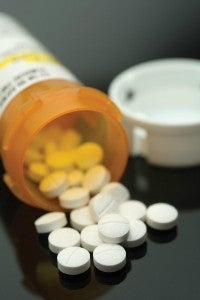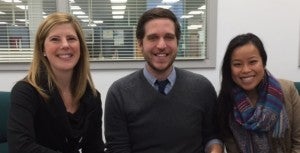RESEARCH | Home Run
Summer 2016
 NEARLY $300 BILLION PER YEAR. For the health care industry, the costs of medication errors and nonadherence are great. For patients, the costs are greater. “We find out-of-date medications, bottles of expired opiates, different strengths of prescriptions mixed together, improper storage––the list goes on,” says Associate Clinical Professor Virginia Lemay. Since 2013, she has been working with Visiting Nurse Services of Newport and Bristol Counties on a program she developed to provide at-home pharmacy services to patients, in order to help prevent medication-related issues and hospital readmissions. This year, a $78,000 grant from the van Beuren Charitable Foundation allowed her to expand the program further.
NEARLY $300 BILLION PER YEAR. For the health care industry, the costs of medication errors and nonadherence are great. For patients, the costs are greater. “We find out-of-date medications, bottles of expired opiates, different strengths of prescriptions mixed together, improper storage––the list goes on,” says Associate Clinical Professor Virginia Lemay. Since 2013, she has been working with Visiting Nurse Services of Newport and Bristol Counties on a program she developed to provide at-home pharmacy services to patients, in order to help prevent medication-related issues and hospital readmissions. This year, a $78,000 grant from the van Beuren Charitable Foundation allowed her to expand the program further.
Under the yearlong grant, Thomas Kalista, Pharm.D. ’13, postgraduate pharmacy resident Madeleine Ng, and Lemay make weekly visits to high-risk patients (those taking 10 or more medications) following their discharge from the hospital to perform medication reconciliation—compiling a list of prescription and over-the-counter medications, identifying potential issues, and ensuring each patient’s medication regimen aligns with their physician’s orders—while partnering with prescribers and community pharmacists. “We developed this program because we saw a care gap,” says Lemay. “We’re helping to connect the dots between the community pharmacist, patient, prescribers, and nursing staff.”
For patients, the one-on-one time with pharmacists can be life-changing. “It has been eye-opening to see what goes on at a patient’s home versus what goes on in the pharmacy,” says Ng, recalling an example of a patient who had been using an inhaler upside-down. “In the pharmacy, patients can be shy about asking questions, or they may feel rushed, so they go home without understanding how to use their medications properly.”

Since February 2016, Lemay has observed a marked reduction in hospital readmission rates. She hopes to receive continued funding for the program in order to measure impact, not only on readmission rates, but also on increase in medication adherence, patient quality of life, and nursing time. “By handling medication management, we’ve been able to free up time for our nurses to devote to patient care,” says Lemay.
Ng notes one more––priceless––benefit. “For homebound patients, we may be their only social interaction for that day,” she says. “They love when we come.”
Continue reading the Pharmacy Newsletter →
 Home
Home Browse
Browse Close
Close Events
Events Maps
Maps Email
Email Brightspace
Brightspace eCampus
eCampus


